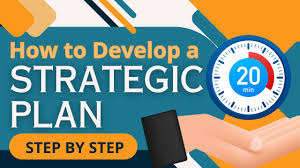How to Start Your Own Political Movement in the USA
Starting your own political movement can be an exciting and impactful way to make a difference in society. It’s a big endeavor, but with the right approach, you can build a movement that inspires change and mobilizes people. Here’s a step-by-step guide to help you get started.
Define Your Vision and Goals
To kick off your political movement, you need a clear vision. This means you should know exactly what you want to achieve. Start by identifying the issues or problems you’re passionate about. Is it environmental protection, social justice, or economic reform? Your vision should address a specific need or gap in current political discourse.
Once you have your vision, set concrete goals. These goals will guide your movement and help measure your progress. For example, if your vision is to improve educational standards, your goals might include advocating for increased funding for schools or implementing new teaching methods. Make sure your goals are specific, measurable, achievable, relevant, and time-bound (SMART).
Build a Strong Team
No movement can succeed without a dedicated team. Start by reaching out to like-minded individuals who share your passion and vision. Look for people with different skills—such as organizers, communicators, and strategists—who can contribute in various ways.
Build relationships with your team members by holding regular meetings and brainstorming sessions. Clearly define roles and responsibilities so everyone knows their part in the movement. Encourage open communication and collaboration to ensure that everyone is working toward the same objectives.
Develop a Strategic Plan

A strategic plan outlines how you will achieve your goals. It includes a roadmap of actions, timelines, and resources needed. Start by breaking down your goals into smaller, manageable tasks. Determine the resources required, such as funding, volunteers, and materials.
Create a timeline with key milestones and deadlines. For instance, if you plan to launch a public awareness campaign, set dates for when you will design materials, organize events, and distribute information. Regularly review and adjust your plan as needed to stay on track and adapt to any changes.
Engage with Your Community
Engaging with your community is crucial for gaining support and building momentum. Start by identifying your target audience. This could be local residents, specific interest groups, or organizations aligned with your cause.
Host events and meetings to raise awareness about your movement. Use social media and traditional media to reach a wider audience. Encourage community members to participate in discussions, share their opinions, and get involved in your activities. Building strong relationships with community leaders and influencers can also help spread your message and increase visibility.
Fundraising and Resource Management
To sustain your movement, you need to secure funding and manage resources effectively. Begin by creating a budget that outlines your anticipated expenses and income sources. This might include costs for events, promotional materials, and operational expenses.
Explore different fundraising options, such as crowdfunding campaigns, donations, grants, and sponsorships. Be transparent about how funds will be used and regularly update your supporters on financial status. Efficiently manage resources to ensure that you are using them effectively and in line with your goals.
Advocate for Change
Advocacy is at the heart of any political movement. Develop a clear message that communicates your vision and goals. Craft persuasive arguments and use data and evidence to support your stance. Create compelling content, such as speeches, articles, and social media posts, to spread your message.
Organize campaigns and events to engage the public and policymakers. This could include rallies, petitions, and meetings with elected officials. Use various channels to amplify your message and mobilize supporters. Track the impact of your advocacy efforts and adjust your strategies based on feedback and results.
Monitor Progress and Adapt
Monitoring your movement’s progress is essential for staying on course and achieving your goals. Establish metrics to measure success, such as the number of supporters, media coverage, and policy changes. Regularly evaluate your progress and assess whether you are meeting your objectives.
Be open to feedback and willing to adapt your strategies as needed. Political movements often face challenges and obstacles, so flexibility is key. Learn from your experiences and use them to improve your approach. Celebrate your successes and address any setbacks constructively.
Build Alliances and Partnerships
Building alliances and partnerships can strengthen your movement and extend its reach. Collaborate with other organizations, activists, and leaders who share similar goals or interests. These partnerships can provide additional resources, expertise, and support.
Engage in coalition-building by participating in joint events, sharing resources, and supporting each other’s initiatives. A united front can amplify your message and increase your movement’s impact. Foster long-term relationships with your partners to create a network of support and collaboration.
Ensure Legal and Ethical Compliance
Navigating legal and ethical considerations is crucial for maintaining the integrity of your movement. Familiarize yourself with laws and regulations related to political activities, fundraising, and advocacy. Ensure that your movement complies with all relevant legal requirements, such as registering as a nonprofit organization if applicable.
Adhere to ethical standards in all your dealings. Be transparent, honest, and accountable in your communications and financial management. Build trust with your supporters and stakeholders by operating with integrity and respecting their values and concerns.
Evaluate and Reflect
After your movement has been active for a while, take time to evaluate and reflect on its impact. Review your achievements, challenges, and lessons learned. Assess whether your goals have been met and identify areas for improvement.
Gather feedback from your team, supporters, and community members. Use this feedback to refine your strategies and make necessary adjustments. Reflecting on your experiences will help you understand what worked well and what could be improved in future efforts.
Starting a political movement is a significant undertaking, but with a clear vision, dedicated team, and strategic approach, you can create meaningful change. Stay focused on your goals, engage with your community, and adapt to new challenges as they arise. By following these steps, you’ll be well on your way to launching a successful political movement in the USA.










